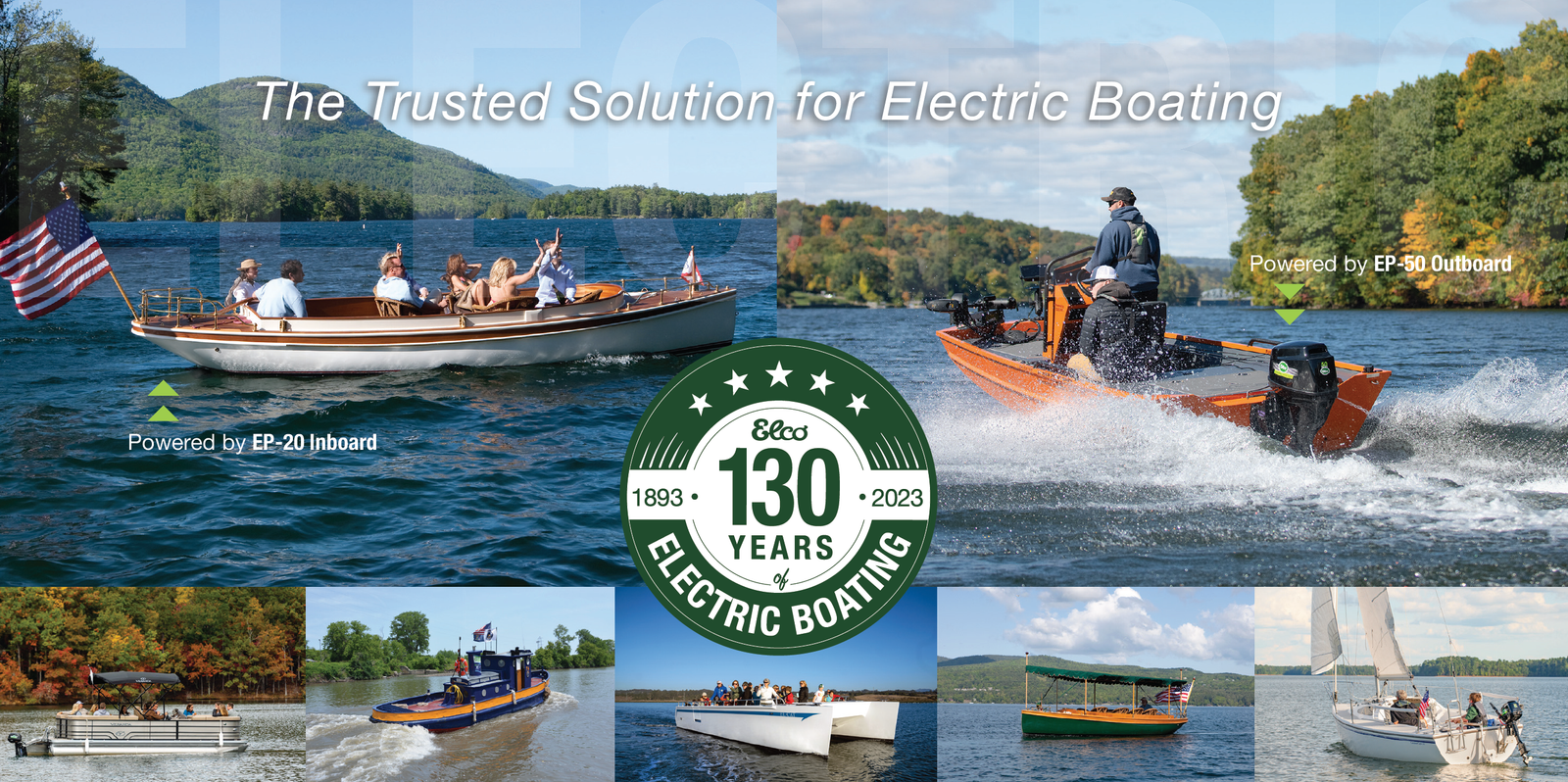Elco Motor Yachts
Introduced clean electric marine propulsion 130 years ago this
year at the 1893 Chicago World’s Fair. Since then, the company has been a trailblazer in
marine electric propulsion, launching one innovation after another.
When introduced during the early days of electrification, steam and naptha powered most boats.
Riding aboard a battery-driven 36-foot boat at theWorld’s Fair was a novel experience. Built by the
Electric Launch Company, as Elco was known then, the vessels made 66,000 three-mile trips
and carried more than a million passengers. Notables such as Henry Ford, Thomas Edison and
John Jacob Astor quickly became customers. To this day, the company still builds luxury launches
reminiscent of the golden age of yachting.
Elco, as the company soon became known, continued to refine electric boats.
Its 32-foot launch Wenona, built in 1899, powered the boat’s 5-hp electric
motor from batteries of nickel iron plate immersed in potassium hydroxide to
quietly, cleanly and safely glide at 7 mph for more than eight hours between charges.
Since then, Elco has remained an innovator. It was the first boatbuilder to adopt
methods of standardized mass production. It even introduced the world’s first boat
showroom, Port Elco in Midtown Manhattan. It also introduced direct financing and
post-purchase continuous care.
Military applications
At the beginning of the 20th century,
when Exide Battery founder Isaac Riceacquired both Elco and Holland Submarine, the newly
formed Electric Boat Company introduced battery-powered propulsion to the U.S. Navy’s submarine fleet.
As Elco’s recreational boat business continued to expand, it was hired to build Elco Motor Torpedo Boats for the United Kingdom
during World War I, producing 550 units in all. It also built 326 U.S. Patrol Torpedo
Boats in World War II. This included then Lt. John F. Kennedy’s PT-109 as well as his
lesser-known next command, PT-59. At the start of the Cold War, Elco was
a small branch within General Dynamics Corporation. A corporate reorganization
shifted focus to naval submarines and a newly acquired aircraft division, causing
Elco’s pleasure boat efforts to linger.
Recreational advancements
In 1987, Elco leveraged then-new solid state motor controller technology, reintroducing
battery-powered electric propulsion aboard recreational boats with the reissue of Elco’s
iconic classic launches. In 2009, the company began offering electric outboard motors as
electric boat propulsion began to emerge. Today, Elco offers a full range of safe
and reliable electric inboard and outboard motor systems with power up to 200 hp.
Compact and virtually maintenance-free, they are appreciated by recreational boaters
and commercial operators alike for their lack of warm-up time, instant throttle response,
impressive torque and quiet, exhaust-free ride.
An international player
Elco’s electric propulsion systems power a diverse range of modern applications throughout
the world. In Australia, for example, Elco inboard motors provide sustainable power
cruising aboard luxury catamarans where all propulsion and house electrical needs
come entirely from batteries charged by solar arrays and backup hybrid diesel power.
Elco powers top competitors in fishing tournaments on electric-only lakes and
reservoirs where pristine waters teem with monster bass. Coastal anglers similarly
enjoy stealthy electric shallow-water access.
Matching gas performance
Today’s electric outboards increasingly match gas engine performance.
On a 1970 13-foot Boston Whaler Super Sport, Elco’s EP-50 tops out at 27.9 mph
where the boat’s lithium batteries last for 51 minutes and cover 23.6 miles. The previous
2001 40-hp Johnson gas outboard averaged 30.1 mph for 46 minutes and traveled a nearly
identical 23.9 miles from a 6-gallon tank of gasoline. Elco’s newest smaller, lighter batteries
should push the Whaler even faster while using less interior space than the Johnson’s
cranking battery, oil reservoir and gas tank.
It’s been nearly a decade since the New York State Canal System repowered its 40-foot
tug’s 6-cylinder Detroit Diesel with clean, quiet and smooth Elco inboard electric power. With
increased horsepower, the workboat operates for an entire day on batteries alone.
“We’re proud to continue Elco’s 130-year tradition of innovation,” said Steve Lamando, Elco
president. “With a global shift towards sustainable alternatives to combustion engines, we are well
positioned to continue trailblazing electric marine propulsion with new products and technologies.”
For more information, contact Elco Motor Yachts, 9 Front St. Lake George, NY 12845, at
877-411-3526, or visit www.elcomotoryachts.com.
